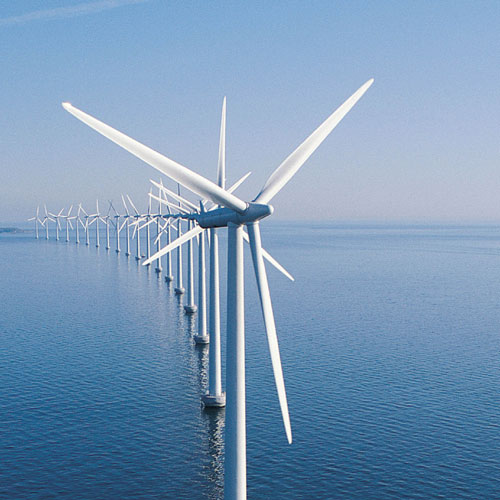Wind of change for Shanghai's green energy
Shanghai's first offshore wind farm started supplying power to the city in July, marking another step forward in the city's development of green energy.
 |
|
Offshore wind farm [File photo] |
The 2.3 billion yuan (US$340 million) Donghai Bridge Wind Farm is the biggest of its kind in China, with 102 megawatts of installed capacity. It is also the first offshore wind farm outside Europe.
Although they contribute to less than 1 percent of the city's current total power capacity of about 18,200 megawatts, the windmills are part of the city's aggressive efforts to make Shanghai a leader in the development of new energy sources.
Shanghai plans to build 13 wind power plants by 2020. It aims to have between 200 and 300 megawatts installed wind capacity by the end of this year, contributing about 2 percent of the city's power capacity.
By 2020, the number will be increased to 1,000 megawatts, equivalent to 5 percent of capacity. Offshore windmill farms will be the major suppliers.
"The wind power sector has a bright future and could also boost the city's equipment manufacturing industry," said Mayor Han Zheng. "The municipal government will improve the development and wind power and give it full support."
Limited land
Unlike China's Inner Mongolia and Xinjiang regions, which have vast open prairies to develop onshore wind farms, heavily urbanized Shanghai is restricted by limited land availability. That's why the city looked to its offshore waters rather than be left behind in China's race to develop new energy sources.
The first offshore wind farm is on the east side of the Donghai Bridge and consists of 34 3-megawatt wind-driven generators. The farm is able to generate 260 million kilowatt hours of electricity per year.
The first batch of power generated by the wind farm is being transmitted to the World Expo site before it is connected to more than 200,000 city households when fully operational. The wind farm will save the city about 86,000 tons of coal and reduce carbon dioxide by more than 234,700 tons every year.
"The Donghai wind farm is relatively small and more like a pilot project," said Shi Pengfei, vice president of Chinese Wind Energy Association. "The experience and lessons learned from the project will help us make wind power development more efficient."
China is just starting development of green technologies, aiming to close the gap with European countries that have been experimenting with alternative energy for two decades.
Going offshore has its drawbacks. Coastal wind farms require higher technologies and can cost up to three times more than conventional onshore windmills. Wind turbines above water have to be more corrosion resistant, insulated and more reliable.
 0
0 







Go to Forum >>0 Comments